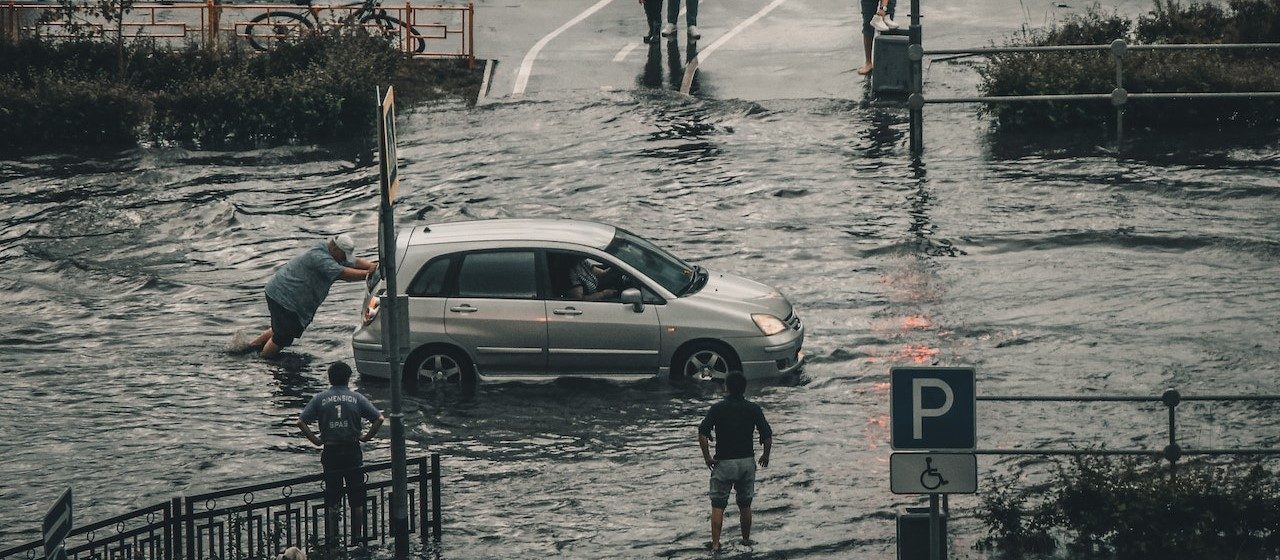What To Do If Your Car Is In A Flood

Photo by Sveta K under Pexels License
A Step-By-Step Guide on What to Do If Your Car Is in a Flood
Do you know what to do if your car is in a flood? When a heavy rainstorm is forecast in your area and flooding is expected, you have to know the necessary steps in case your car gets flooded. As one of the world’s most common natural disasters, flash floods can be extremely dangerous to motorists because of their unpredictability and speed.
Why Flash Floods are Dangerous
In case you’re not aware, flash floods can happen anywhere without warning when intense heavy rains cause the water level to rise up quickly as rivers and creeks overflow.
What happens when you misjudge the depth of the floodwater when you drive your vehicle into it? Did you know that just six inches of water reaching the bottom of your car could stall your vehicle or cause you to lose control? Moreover, your vehicle could float away under just one foot of floodwater. With two feet of rushing water, your vehicle could be swept away even if it’s an SUV or pickup truck.
What You Need to Remember
Here’s a step-by-step guide on what to do if your car is in a flood:
- Never start the car.
Don’t ever make the grave mistake of attempting to start the engine of a flooded car. Turning the key to check if it still works would cause irreparable damage to your vehicle.
- Check the depth of the flood.
If it is safe enough to do so, evaluate the possible damage done to your car by looking at the depth of the floodwater it has been submerged into. If the water has not reached the bottom of your car’s doors, your car may not be seriously damaged.
However, if you see the water reaching the bottom of your dashboard or even higher, chances are, your car will be considered totaled by most insurance companies. A vehicle is considered totaled when the cost to fix it exceeds its value. In this case, it’s best to have it towed and assessed by a professional mechanic.
- Contact your insurance company.
If your car gets damaged due to flooding, you need to call your insurance provider as soon as possible. Check if you’re covered for replacement or repairs from engines to floor mats. In most cases, flood damage is covered by comprehensive insurance.
- Start cleaning and drying the interior of your car.
Mold will grow quickly the longer your car remains wet and soggy. Lingering mold can render your car unsafe to drive. To keep this from happening, it’s extremely important to start drying the interior.
Air your car out by opening the doors and windows and get the floor dry by mopping or putting towels on it to soak up all the remaining water. Replace the items that got wet such as floor mats, carpets, door panels, upholstery, and seat padding. Use baking soda to deodorize your car before putting all the dried-out components back inside.
- Check the air cleaner and the oil.
Much of your car’s damage can be assessed by checking the oil level. If water droplets are found on your car’s dipstick, this means the water has gotten into your car’s engine. Since car cylinders were not built to handle water, they could break if you turn the key.
The best thing to do at this point is to have your vehicle towed to a reputable auto repair shop where the mechanic can have the oil changed and the water cleared. The fuel tank needs to be emptied as well.
- Assess the rest of the components for damage.
Don’t forget to check your vehicle’s electrical components. Turn on the headlights, assess the power locks, interior lights, stereo, turn signals, seats, windows, and the air conditioning. If any part functions differently than it did before, it’s likely that you have electrical problems.
Most modern cars have sealed fuel systems, but if yours is an older model, you need to have the fuel systems drained. Also, you need to check if the clutch, brake, coolant reservoirs, and power steering are contaminated. Have your mechanic and your insurance company deal with the problems and cost of repair or replacement if you detect any.
- Inspect the wheels and the tires.
Don’t even think about moving the car before your check for any debris lodged around its wheels, brakes, and underbody. Remember to set the parking brake before you crawl around the wheels.
It’s Better to be Safe than Sorry
If you have a gut feeling that your car is damaged beyond repair, push for the insurance company to declare it a total loss to save yourself from a lot of trouble in the future. Cars that have been previously damaged by floods will undoubtedly experience problems months or years after the event.
A Great Way to Get Rid of an Unwanted Vehicle

Photo by frank mckenna under Unsplash License
Are you looking to get rid of an unwanted vehicle? Why don’t you donate it to us at Breast Cancer Car Donations to help save the lives of breast cancer victims? Your charitable contribution will help certified 501(c)3 nonprofits in partnership with us to provide breast cancer treatment and other breast health services to destitute Americans who desperately need them to stay alive.
To know more about Breast Cancer Car Donations, don’t hesitate to call our toll-free 24/7 hotline 866-540-5069 or send us a message online. You can also visit our FAQs page for more information on our car donation process, the tax deductions and other rewards that await our donors, the types of vehicles you can donate, and other details.
You can make your car donation by filling out our online donation form. We accept car donations anywhere in the United States since we have car donation programs in all 50 states.
Do you want to contribute to saving the lives of breast cancer sufferers? Call us at 866-540-5069 now!
Last Updated: March 9th, 2023
